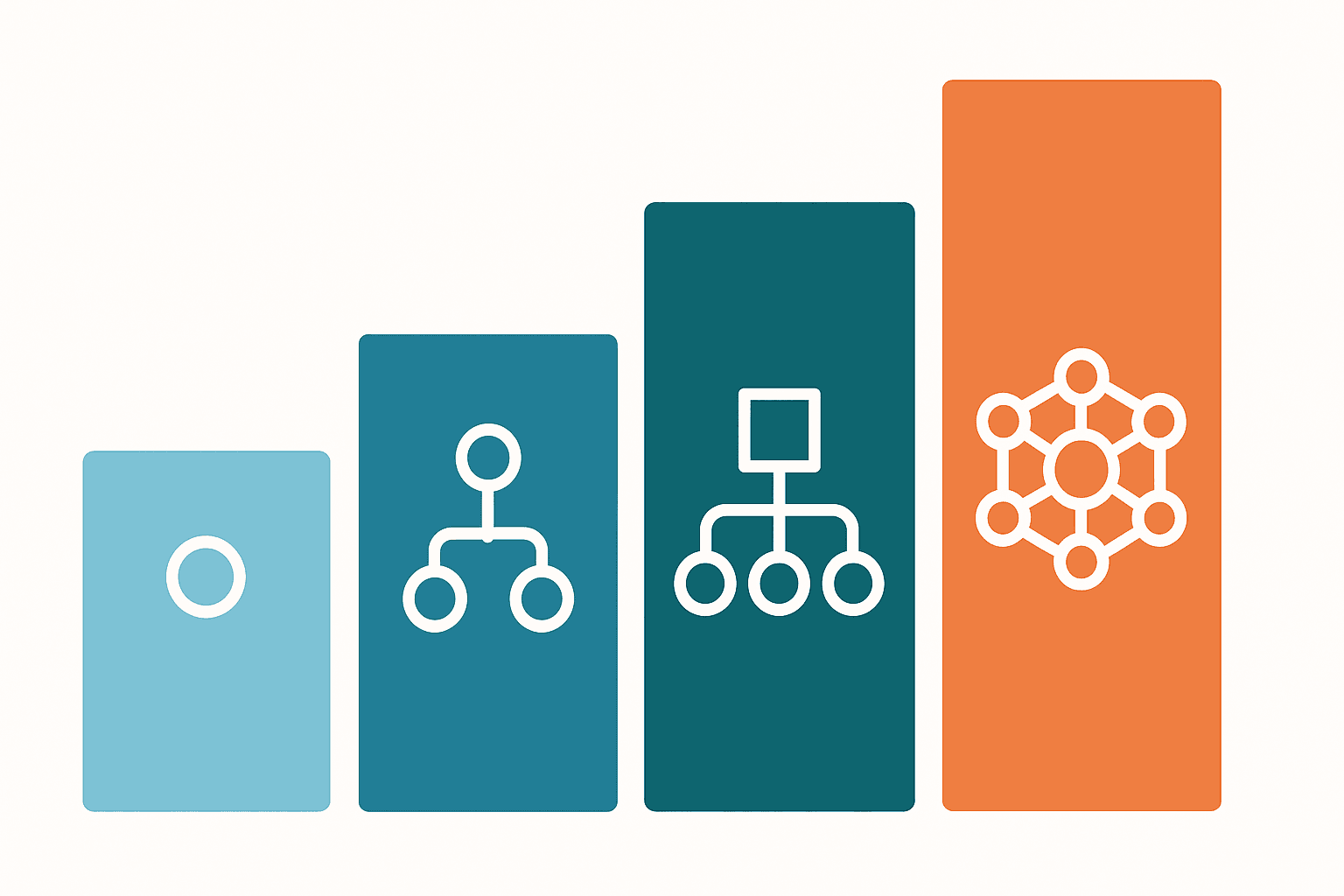Not All AI Developers Are Built the Same — Here's the Tier System That Actually Matters
These days, "AI consultant" can mean just about anything. Some are prompt engineers who've never deployed a workflow. Others are building full-stack systems for enterprise clients. And in between? A whole lot of variation.
Here's the thing: calling everyone an AI developer or automation expert is like calling everyone who opens Excel a financial analyst. The industry is moving too fast—and businesses are depending too much on these tools—for us to stay vague about who's doing what.
So let's break it down. These aren't "levels" or job titles. They're tiers of maturity in how someone designs, builds, and ships AI systems for real-world use.
Tier 1: Prompt-Only Practitioners
These individuals are adept at engaging with tools like ChatGPT and Gemini. They write great prompts, summarize documents, and maybe even repurpose content for social media. But their work doesn't extend into infrastructure, logic, or integration.
- Common tools: ChatGPT, Claude, Canva, Notion
- Use cases: Content generation, copywriting, customer FAQs
- Limitations: No workflows, no backend logic, no user data flow
If you're here: Start learning how tools talk to each other. Get into Zapier, Make, or Pipedream. Ask yourself: What happens after the content gets created?
Tier 2: Automation Builders
These builders have started linking tools together. They can create multi-step workflows—like taking a form submission, sending it to a Google Sheet, notifying someone on Slack, and triggering an email follow-up. Their logic is mostly linear, but it's functional and useful.
- Common tools: Zapier, Make, Airtable, Google Sheets, APIs (light)
- Use cases: Lead capture flows, CRM automations, internal ops tools
- Limitations: Shallow error handling, low customizability, hard to scale
If you're here: Start thinking about system failure. What happens if a webhook doesn't respond? Learn how to structure automations that survive under stress. Learn to log, retry, and document.
Tier 3: System Integrators
At this point, you're no longer duct-taping tools—you're building resilient systems. You use APIs natively, handle auth flows, and build automations that react to real-time data. You might use vector search, long-term memory, or RAG-based workflows.
- Common tools: OpenAI API, Pinecone, Postgres, LangChain, Node-RED, Vapi, webhooks, Next.js
- Use cases: AI agents, support bots, sales CRMs, embedded analytics
- Strengths: Modular, testable, extensible, and built with production in mind
If you're here: Congrats—you can sell what you build. Now refine your delivery. Think about UI/UX, documentation, latency budgets, security, and SLA definitions.
Tier 4: Product Architects
This tier isn't just about coding—it's about architecture. These developers are designing products or platforms that serve multiple users, integrate AI at their core, and often include monetization logic. You understand how to price, deploy, and scale across different verticals.
- Common tools: Serverless architecture, custom APIs, LangGraph, Supabase, Firebase, Stripe, Docker, and user dashboards
- Use cases: SaaS products, internal platforms, API-based services, multi-agent frameworks
- Scope: Business logic + AI + infra + growth loops
If you're here: You're not offering services. You're offering IP. Think legal protections, onboarding UX, user data compliance, versioning, and investor decks.
What This Means for Businesses
If you're hiring an AI consultant or developer, be clear about what you need:
- If your team just needs help writing better prompts? Tier 1 is enough.
- If you're trying to automate daily operations? You need someone at Tier 2 or 3.
- If you want to launch a customer-facing product or internal tool? Don't settle for anything below Tier 3—and ideally, aim for someone thinking at Tier 4.
Your consultant's tier should match the ambition of your build.
90-Day Plan for Moving Up
Want to move up a tier? Here's a realistic 90-day ramp:
Days 0–7:
- Pick one workflow. Build it end-to-end.
- Log every input, output, and failure.
- Start tracking usage and outcomes.
Days 8–30:
- Add authentication.
- Introduce branching logic.
- Make your system self-aware (add logs, alerts, retries).
Days 31–90:
- Expose it via API or frontend.
- Layer in RAG or memory if AI is involved.
- Get a user to test it—and charge them.
You don't have to become a full-stack AI developer overnight. But if you want to be taken seriously in this space? You have to ship something real.
Final Takeaway
Prompting is just one muscle. Building is the whole system.
The real economy isn't paying for fancy screenshots—it's paying for tools that save time, grow revenue, or unlock scale.
So whether you're a founder, a developer, or a consultant—ask yourself: What tier am I actually operating in?
Then get to work on the next rep.
Take the Quiz
Not sure which tier you're in? Take our interactive 10-question quiz to discover your current tier and get personalized next steps for your AI development journey.
👉 Take the AI Developer Tier Quiz
Ready to level up your AI development skills? Subscribe to our newsletter for weekly insights on building production-ready AI systems, automation frameworks, and real-world case studies from teams shipping AI products.


